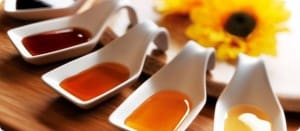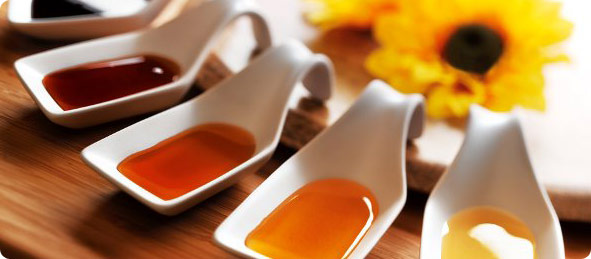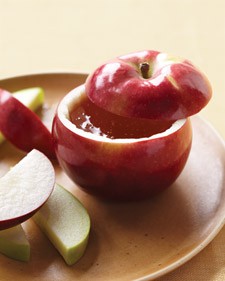In August, I got to meet a few representatives from the National Honey Board. They were hosting a honey tasting – with three different varietals: Avocado, Buckwheat and Clover.
Of course I had tasted the clover varietal before, as it is the most common varietal and the one most of us buy at the grocery store.
But I truly couldn’t believe how different buckwheat and avocado varietals taste – and look – from the honey bear I had at home. For the record, they were all good, but my favorite was definitely the avocado varietal – it was rich and buttery, just like my favorite food.
After the experience of tasting those three honeys, I was inspired to host my own honey tasting on Rosh Hashana. We will be doing this the first and second night of Rosh Hashana, so I won’t be able to take live pictures, but here is my plan, if you want to replicate this at your table.
Start with Varietal Honeys
Plan to taste a maximum of three to five varietals, so that you don’t overwhelm your guests’ palettes.
You can purchase varietal honeys from farmer’s markets and speciality gourmet stores. You may also have luck finding various varietals at Whole Foods or other high-end health food stores. Although varietals aren’t inexpensive, a little does go a long way with a tasting.
Set Up Your Honey Tasting
Before your tasting, decant each honey into a tasting container. You can use clear or colored glass jars, cordial glasses or shot glasses. You can even hollow out apples to use as “dishes”.
Whatever container you go with, make sure that it will allow your guests to see the consistency and color of the honey. Honeys range in color from a light golden hue to nearly black, and everything in between.
You will also need small tasting spoons – count on one spoon per flavor per guest. In addition, set out an individual plate for each guest.
How to Taste the Honey
Place a half teaspoonful of each varietal on your guests’ plate, going from lightest to darkest color. Take in the aroma and color, then place the honey in your mouth and let it melt on the tip of your tongue.
Neutralize your palette between varietals just like you would at a wine tasting – by sipping room temperature water or eating unsalted crackers.
About the Varietals
If you want to get really fancy and impress your guests with your knowledge of honey varietals, here is a quick cheap sheet, but you can find much more information on Honey.com’s Varietal Guide.
Quick Guide to Honey Varietals

Alfalfa – Produced from purple blossoms of alfalfa. Has a mild flavor and aroma.
Avocado – Produced primarily in Californa. Has a rich caramelized molasses flavor with a flowery aftertaste.
Blueberry – Produced in Michigan and New England. Has a moderate fruity flavor with a delicate aftertaste.
Buckwheat – Produced in Minnesota, New York, Ohio and Pennsylvania. Has a dark color with a molasses and malty flavor.
Clover – The most common varietal. Has a sweet, flowery flavor.
Orange Blossom – Produced in Florida and Southern California. Has a sweet and fruity taste that hints at the citrus tree.
Sage – Produced in Californa. Has a light color with a sweet, clover-like flavor.
Tupelo – Produced in Georgia and Florida. Has a complex flavor with herbal, fruity aftertastes.
Have you ever hosted a honey tasting party for Rosh Hashana? What advice do you have for those of us that are new to this?
Shana Tova u’Metukah!
Photo Credits: Honey.com, MarthaStewart.com

















Since I live in savannah, I’d be remiss to mention “Savannah Bee Company” gourmet honeys. Someone brought us this lovely gift sampler of different varietals last year as a hostess gift, and while not the same as hosting a whole party . . . still might be worth clicking on the link to check it out! They were each distinctly different tasting and certified kosher! Have a sweet new year!
http://www.savannahbee.com/PDGImages/1-bees%20%204522_web.jpg
I love orange blossom honey. I’ve never had avocado–I imagine I would love that one. At a farmer’s market in TN I bought “sourwood honey” which really is different.